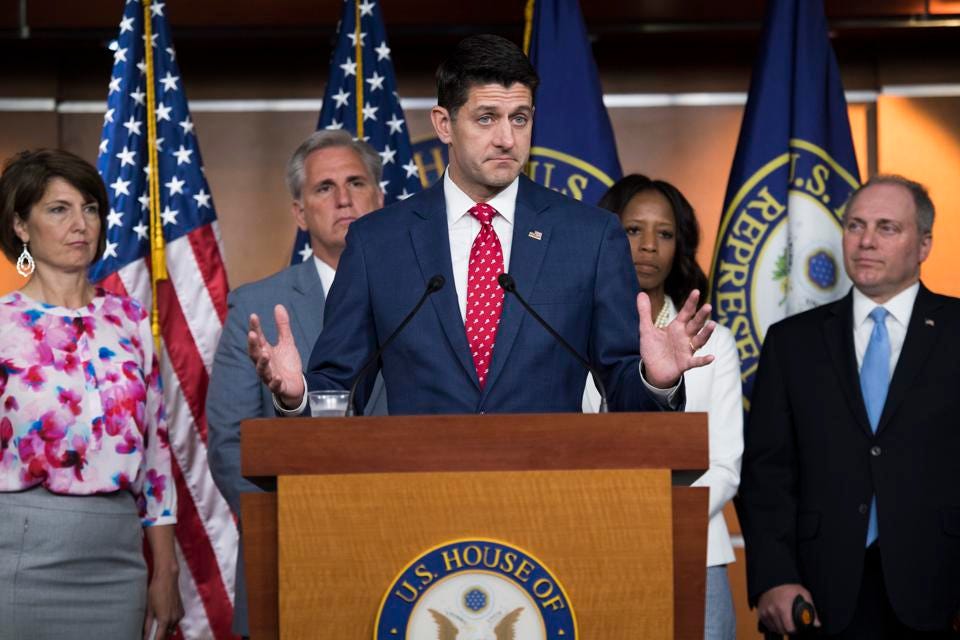
CONTRIBUTOR
September 11th, 2018
This is a continuation of What You Need To Know About Medicare For All, Part I
- The real cost of Medicare includes hidden costs imposed on doctors and taxpayers.
Blahous estimates that the administrative cost of private insurance is 13%, more than twice the 6% it costs to administer Medicare. Single-payer advocates often use this type of comparison to argue that universal Medicare would reduce health care costs. But this estimate ignores the hidden costs Medicare shifts to the providers of care, including the enormous amount of paperwork that is required in order to get paid.
Medicare is the vehicle by which the federal government has been trying to force the entire health care system to adopt electronic medical records – a costly change that appears to have done nothing to increase quality or reduce costs, while making it easier for doctors to “up code” and bill the government for more money.
There are also the social costs of collecting taxes to fund Medicare, including the costs of preparation and filing and the costs of avoiding and evading taxation. By some estimates, the social cost of collecting a dollar of taxes can be as high as 25 cents.
A Milliman & Robertson study estimates that when all these costs are included Medicare and Medicaid spend two-thirds more on administration than private insurance spends.
Single payer advocates are also fond of comparing the administrative costs of health care in the United States and Canada – again claiming there is a potential for large savings. But these comparisons invariably include the cost of private insurance premium collection (advertising, agents’ fees, etc.), while ignoring the cost of tax collection to pay for public insurance. Using the most conservative estimate of the social cost of collecting taxes, economist Benjamin Zycher calculates that the excess burden of a universal Medicare program would be twice as high as the administrative costs of universal private coverage.
- Not a single problem in Obamacare would go away under Medicare for all.
If everyone could join Medicare, what premium would they have to pay? Would the premiums be actuarially fair, representing the expected cost of the enrollee’s heath care? Or would there be subsidies and cross subsidies as there are under Obamacare? Would the premium vary by age? By income? By health status? By healthy living choices?
What about the role of employers? Obamacare tried to force them to pay a large part of the cost of reform by imposing a mandate and requiring them to cover a liberal set of benefits. Economists tell us that employee benefits are substitutes for wages and are therefore “paid for” by the employees. But on paper, employers write checks for about 75% of the cost of insurance for about 95% of the people who have private insurance. Under Medicare for all, would they get off scot free?
Then there is the exchange. Medicare has one. It’s how roughly one-third of seniors get into Medicare Advantage plans. Like the Obamacare exchanges, the Medicare Advantage exchange has government subsidies for private insurance, mandated benefits, annual open enrollment and no discrimination based on health status. And, it seems to work reasonably well.
The Obamacare exchanges, by contrast, have been a disaster – with spiraling premiums, unconscionably high deductibles, extra charges for chronic patients who need specialty drugs, and a race to the bottom on provider networks that exclude more and more of the best doctors and the best hospitals.
What will happen when the same politicians, catering to the same interest groups that gave us Obamacare, set out to design an exchange for their Medicare-for-all program? That’s anyone’s guess.
But if Democrats know how to defy the special interests and create a workable exchange, wouldn’t they have done that already in the market for individual insurance?
- Medicare is already on a path to health care rationing.
Medicare is already on an unsustainable path. It has made future promises that far exceed expected revenues, based on the Medicare payroll tax and Medicare’s share of general federal revenues. Ironically, Democrats, rather than Republicans, were the first to formally acknowledge this fact. At the time Congress passed the Affordable Care Act (ACA) creating Obamacare, the Medicare trustees estimated the unfunded liability in the program at $89 trillion – stretching out indefinitely into the future. Yet, in the next trustees’ report that figure had dropped to $37 trillion.
Think about that. When Barack Obama signed the ACA into law, he wiped away $52 trillion of federal government debt. How did that happen? By theoretically putting the government’s health care spending on a budget.
For the past 40 years real, per capita health care spending has been growing at twice the rate of growth of real per capita income. That’s not only true in this country; it is about the average for the whole developed world. You don’t need to be an accountant or a mathematician to know that if an expenditure item is growing at twice the rate of growth of your income, it will crowd out more and more of other spending – eventually taking up the entire pie.
To deal with this problem, there are three “global budgets” that Obamacare promised to restrict three budgets to a rate of growth no greater than the rate of real GDP growth per capita plus about ½ of a percent . These budgets are total Medicare spending, Medicaid hospital spending and (after 2018) federal tax subsidies in the health insurance exchanges.
If these budgets are binding, the burden of excess growth in health care spending for the federal government will have been relieved – forever.
But here is the problem. The Obama administration only “solved” the problem with pen and ink. It didn’t give the private sector any new tools to control costs. It didn’t empower doctors or hospitals to practice medicine in a more efficient way.
There was an enforcement mechanism: An Independent Payment Advisory Board (IPAB), tasked with the job of keeping spending below the cap – mainly by recommending reductions in fees to doctors and hospitals. In a bipartisan budget deal this year, Republicans in Congress abolished IPAB. But in their latest report, the Medicare trustees imply they believe future administrations will still have the power to enforce the spending cap.
That means that Medicare fees to providers will fall progressively behind private sector fees through time. And that means one of two things must happen. Either providers will respond to lower fees by providing less care to seniors or they will shift costs to non-seniors in the form of higher fees, higher insurance premiums and higher state and local taxes.
One way providers could cut costs is by providing fewer amenities. Hospital patients could be in wards with, say, 4 or 6 beds instead of single-room occupancy – the way hospitals used to be configured in this country and the way they still are in some other countries. Hospital food could be meals-ready-to-eat (what combat soldiers take into the field) rather than the fancy cuisine some facilities serve up today.
Another way to cut costs is to deny seniors access to the most expensive care. Writing in Health Affairs soon after the passage of the ACA, Harvard health economist Joe Newhouse noted that many Medicaid enrollees are forced to seek care at community health centers and safety net hospitals because Medicaid payment rates are so low. He speculated that senior citizens may eventually face the same plight under Obamacare.
A third way to cut costs is rationing by waiting. It is already common practice for doctors to prioritize – seeing private-pay patients first, Medicare patients next and Medicaid patients last. As in other countries with rationing problems, those at the end of the line may never get seen.
But if everyone were in Medicare, wouldn’t seniors be on equal footing with non-seniors? Since there would be no more cost shifting (no private patients to shift costs to) the entire burden of spending cuts would fall on Medicare patients themselves. Yet everyone in the medical world knows that older patients have more difficult problems and take more time. That observation wouldn’t be lost on practitioners in a system in which time is money and the payment for time keeps getting smaller and smaller. Seniors would be less favored patients – just because they are seniors.
However they are made, the future cuts in spending will be large. Writing at the Health Affairs Blog, former Medicare trustee Thomas Saving and I proposed several ways of thinking about what Medicare’s global budget will mean for seniors. One way to think about these changes is to compare them to the average amount Medicare was spending on enrollees prior to Obamacare. For 65-year-olds, the forecasted reduction in spending is roughly equal to three years of average Medicare spending. For 55-year-olds, the loss expected is the rough equivalent of five years of benefits; and for 45-year-olds, it’s almost nine years.
Another way to think about the Medicare spending reductions is to compare them to an alternative reform that would have reduced spending by the same amount: increasing the age of eligibility. The Medicare spending cuts called for under Obamacare are the rough equivalent of raising the age of eligibility for 65-year-olds from 65 to 68. They are the equivalent of making 55-year-olds wait until they reach age 70 and 45-year-olds wait all the way to age 74!
Remember, these are spending cuts already called for under current law. They will be much more severe if seniors have to compete with younger patients for their care.

0 Comments